Bathroom Enhancements
Shower Room Design

Are you prepared to turn your shower into a relaxing oasis? You’re in the right place! This article will walk you through the details of shower room design.
From layout and space planning to selecting the perfect materials and finishes, we’ve got you covered. Discover the latest trends in shower fixtures and accessories, as well as ingenious ideas to make your shower room truly unique.
Get ready to elevate your shower experience to a whole new level of luxury and relaxation. Let’s dive in!
Key Takeaways
- Optimal layout and space planning is essential for a functional and well-organized shower room.
- Attention should be given to the selection of high-quality materials and finishes that complement the overall aesthetic appeal and functionality of the space.
- The right shower fixtures and accessories can enhance both the functionality and style of the shower room.
- Proper lighting and ventilation are crucial for creating a comfortable and inviting shower experience.
Layout and Space Planning
One important aspect of shower room design is determining the optimal layout and space planning. When considering the design principles, it’s essential to create a functional and well-organized space that maximizes efficiency and comfort.

The layout should take into account the placement of fixtures, such as the shower, toilet, and sink, to ensure easy accessibility and a seamless flow. Additionally, storage solutions play a crucial role in maintaining a clutter-free environment. Incorporating built-in shelves, cabinets, or niches can provide ample space for toiletries, towels, and other bathroom essentials.
Materials and Finishes
When it comes to shower room design, we continue to focus on materials and finishes, ensuring that they not only complement the layout and space planning but also enhance the overall aesthetic appeal and functionality of the space.
- Decorative Tiles: Incorporating decorative tiles in the shower room can add a touch of elegance and personality. From intricate mosaic designs to bold geometric patterns, decorative tiles can transform an ordinary shower into a work of art.
- Waterproofing Techniques: Implementing effective waterproofing techniques is crucial to prevent water damage and maintain the longevity of the shower room. From waterproof membranes to sealants and grouts, using the right materials ensures a watertight space that’s both durable and easy to maintain.
- High-quality Materials: Opting for high-quality materials such as natural stone or porcelain for surfaces like walls and floors not only enhances the aesthetic appeal but also ensures durability and longevity.
- Finishing Touches: Paying attention to the finishing touches, such as fixtures, faucets, and hardware, can elevate the overall design of the shower room. Choosing finishes that complement the chosen materials and add a cohesive look and feel to the space.
Shower Fixtures and Accessories
Now let’s delve into the world of shower fixtures and accessories, which play a vital role in enhancing the functionality and aesthetic appeal of the shower room.
When it comes to shower head options, there are a plethora of choices available. From rain shower heads that provide a luxurious downpour experience to handheld shower heads that offer flexibility and convenience, the possibilities are endless.
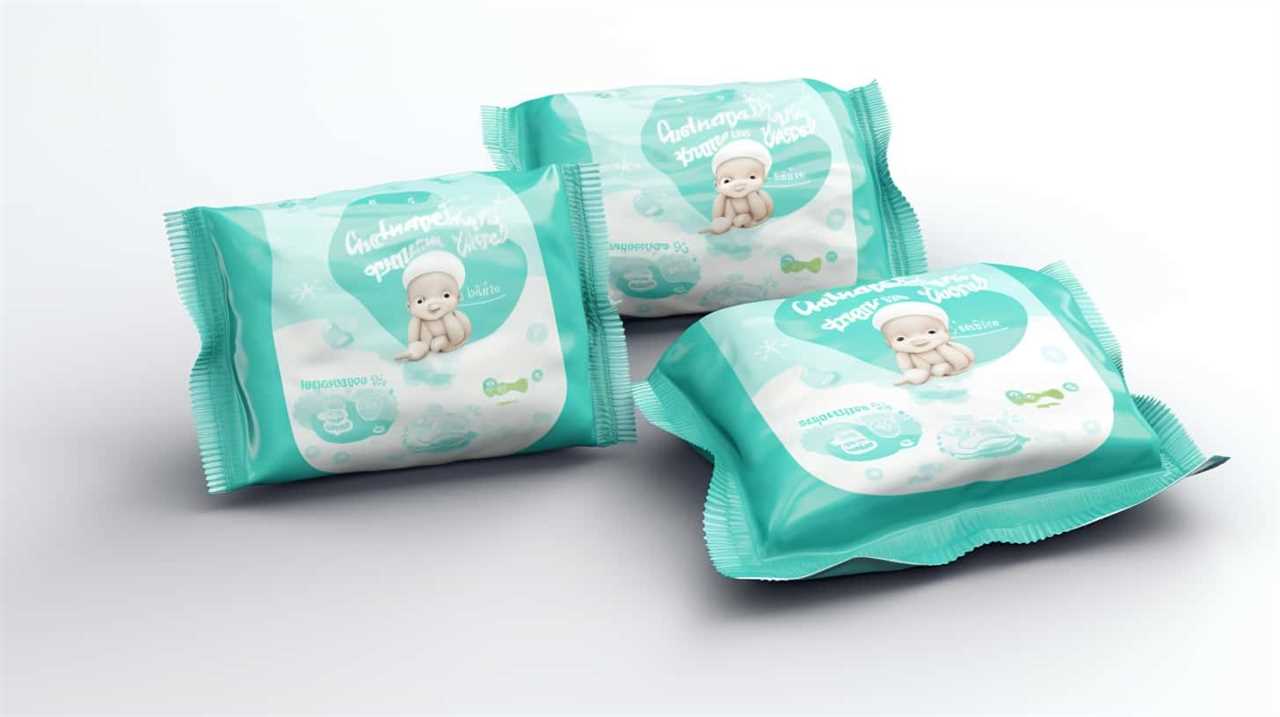
Additionally, shower caddy solutions can help keep your shower essentials organized and within easy reach. Whether it’s a hanging caddy, a corner shelf, or a built-in niche, these accessories ensure that your shampoo, conditioner, and body wash are neatly stored. Furthermore, some shower caddies even come with hooks for hanging loofahs or towels.
With the right shower fixtures and accessories, you can create a shower room that’s both functional and stylish.
Lighting and Ventilation
To ensure a well-lit and properly ventilated shower room, we need to consider the lighting and ventilation options available. Here are some key factors to consider:
- Natural light: Incorporating windows or skylights in the shower room can provide ample natural light, creating a bright and inviting space. Natural light not only enhances visibility but also improves the overall mood and ambiance of the room.
- Energy efficiency: Opting for energy-efficient lighting fixtures can help reduce energy consumption and lower utility bills. LED lights, for example, aren’t only long-lasting but also consume less energy compared to traditional incandescent bulbs.
- Proper ventilation: Installing a ventilation system in the shower room is crucial to prevent moisture buildup, which can lead to mold and mildew growth. A well-ventilated space ensures proper air circulation, keeping the shower room fresh and dry.
- Task lighting: Consider incorporating task lighting options, such as wall-mounted sconces or recessed lights, to provide targeted illumination for specific activities, such as shaving or applying makeup.
Unique Design Ideas
After considering the lighting and ventilation options, we can explore unique design ideas to add a personal touch to our shower room.

One creative storage solution is to incorporate built-in shelves or niches within the shower walls. These can be used to store shampoo, conditioner, and other shower essentials, keeping them easily accessible and clutter-free.
Another idea is to install statement showerheads that not only provide a luxurious shower experience but also serve as a focal point in the room. From rainfall showerheads to LED-lit options, there are endless possibilities to choose from.
Additionally, consider adding a decorative feature wall using mosaic tiles or a bold paint color to create visual interest.
These unique design ideas will transform your shower room into a stylish and functional space that reflects your personal style.

Frequently Asked Questions
What Are the Common Shower Room Dimensions for a Small Bathroom?
When it comes to small bathroom layouts, it’s important to consider the dimensions of the shower room. There are various design ideas to maximize space and functionality, ensuring a comfortable and stylish shower experience.
What Type of Flooring Is Recommended for a Shower Room?
We recommend using waterproof and slip-resistant flooring for a shower room. It’s important to choose a flooring material that can withstand water and provide traction to prevent slips and falls.
Are There Any Specific Shower Fixtures That Help Conserve Water?
Water saving showerheads and eco friendly shower fixtures can help conserve water in the shower room. They are designed to reduce water consumption without compromising the shower experience.
How Can I Incorporate Natural Lighting Into My Shower Room Design?
Incorporating skylights and glass block windows into our shower room design allows for the perfect balance of natural lighting. We have some fantastic ideas to create a bright and inviting space.

What Are Some Creative Storage Solutions for a Shower Room With Limited Space?
When it comes to limited space in a shower room, we’ve got some creative storage solutions. From clever shelving to hanging organizers, we know how to maximize every inch and keep things organized. Let us show you!
Conclusion
In conclusion, designing a shower room is an opportunity to create a space that isn’t only functional but also visually appealing.
By carefully considering layout and space planning, selecting high-quality materials and finishes, choosing the right shower fixtures and accessories, and paying attention to lighting and ventilation, you can transform a simple room into a luxurious oasis.
Just like a well-orchestrated dance, each element must work together harmoniously to create a seamless and enjoyable shower experience.

With an impeccable eye for detail and a passion for bathroom-related, Ava leads our editorial team gracefully and precisely.
Under her guidance, Best Modern Toilet has flourished as the go-to resource for modern bathroom enthusiasts. In her free time, you might find Ava exploring antique shops and looking for vintage bathroom fixtures to add to her collection.
Bathroom Enhancements
What Should Not Be Poured Down the Toilet

We believed we were well-informed about toilets, but we were mistaken! It appears there are certain items that should never be flushed down the toilet.
In our quest for mastery over toilet etiquette, we’ve discovered a few surprising culprits that can wreak havoc on our plumbing. So, if you want to avoid clogs and costly repairs, listen up!
We’re about to reveal the things you should never, ever flush down the toilet.
Key Takeaways
- Non-flushable personal hygiene products such as sanitary pads and baby wipes should not be flushed down the toilet to prevent plumbing damage and costly repairs.
- Grease, fats, and oils should never be poured down the toilet as they can solidify and clog pipes, leading to expensive repairs and harm to the environment.
- Medications and chemicals should not be flushed down the toilet to prevent water contamination and harm to aquatic life. They should be disposed of through drug take-back programs or designated collection centers.
- Paper towels and tissues should not be flushed down the toilet as they can cause clogs in the plumbing system and contribute to pollution. Proper disposal options include using waste bins or composting.
Non-Flushable Personal Hygiene Products
- We shouldn’t flush any non-flushable personal hygiene products down the toilet. This includes items like sanitary pads and baby wipes.
Flushing these products can cause serious damage to our plumbing systems and lead to costly repairs. While these items may seem small, they can accumulate and clog pipes, leading to blockages and backups.
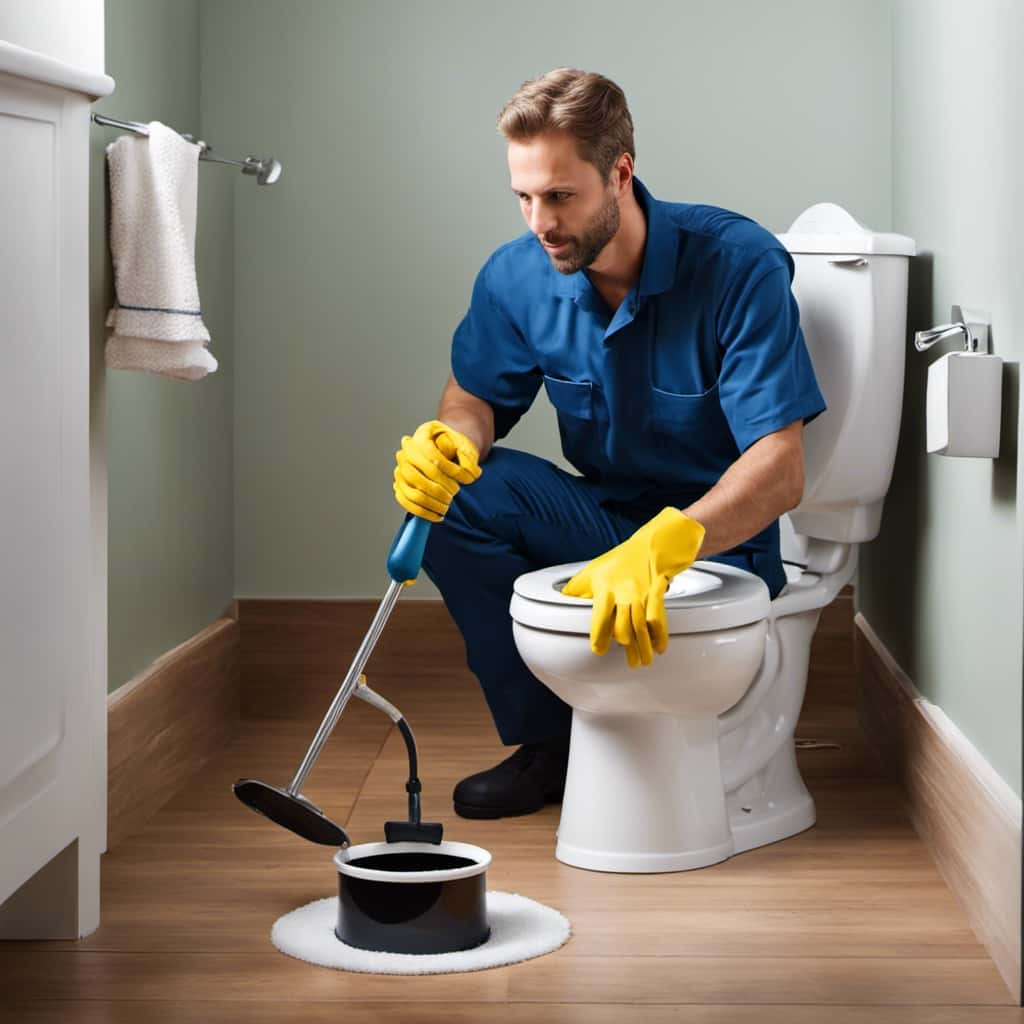
Additionally, flushing non-flushable personal hygiene products can have a negative impact on the environment. These items don’t break down easily and can end up in our waterways, causing pollution and harm to wildlife.
It’s important to properly dispose of these items in the trash to prevent these issues. By doing so, we can maintain the functionality of our plumbing systems and protect the environment.
Grease, Fats, and Oils
Grease, fats, and oils should never be poured down the toilet. Not only can they cause plumbing issues, but they also have a significant environmental impact.
When grease, fats, and oils are poured down the toilet, they can solidify and clog the pipes. This can lead to expensive repairs and inconvenience.

Furthermore, these substances can also harm the environment. When they enter the sewage system, they can mix with other materials and form clumps that can block the flow of wastewater. This can result in sewage backups and overflows, which can contaminate water sources and harm aquatic life.
To properly dispose of grease, fats, and oils, it’s recommended to let them cool and solidify, then scrape them into a container and dispose of them in the trash.
Medications and Chemicals
To continue our discussion on what shouldn’t be poured down the toilet, another item that should never be disposed of in this way is medications and chemicals.
Improper disposal of medications and chemicals can have serious environmental impacts. Flushing them down the toilet can contaminate our water sources, harm aquatic life, and even end up in our drinking water. It’s essential to use proper disposal methods for these substances.

Many communities have drug take-back programs where you can safely dispose of unused or expired medications. Additionally, household chemicals should be disposed of at designated collection centers or through hazardous waste disposal programs. By taking these steps, we can protect our environment and prevent the harmful effects that medications and chemicals can have on our water systems.
Now, let’s move on to discuss the next item on our list: paper towels and tissues.
Paper Towels and Tissues
Continuing our discussion on proper toilet disposal, it’s important to address the issue of paper towels and tissues.
While it may be tempting to flush these items down the toilet, it’s crucial to remember that they aren’t designed to break down in water like toilet paper.

Flushing paper towels and tissues can lead to clogs in your plumbing system, causing costly repairs.
Additionally, these items have a negative environmental impact. Unlike toilet paper, paper towels and tissues aren’t made to dissolve easily and can contribute to clogging in sewer systems, leading to backups and pollution.
To properly dispose of paper towels and tissues, consider using alternative options such as placing them in a waste bin or composting them.
Cat Litter and Pet Waste
Let’s talk about the proper disposal of cat litter and pet waste. When it comes to flushing pet waste down the toilet, it’s important to consider the environmental impact. Flushing cat litter can introduce harmful bacteria and parasites into the water system, posing a risk to aquatic life and human health.

Instead, here are some alternatives to flushing pet waste:
- Scoop the waste into a biodegradable bag and dispose of it in the trash.
- Use compostable cat litter made from natural materials.
- Consider installing a pet waste disposal system in your yard, which allows for proper containment and decomposition.
By choosing these alternatives, we can minimize the negative effects on the environment while still maintaining cleanliness and hygiene.
Let’s be responsible pet owners and make the right choices for our furry friends and the planet.
Frequently Asked Questions
Can I Flush Baby Wipes Down the Toilet?
Flushing baby wipes down the toilet can lead to serious plumbing issues. It’s important to know the disadvantages of using baby wipes and the alternative methods for disposing of them properly.

What Happens if I Pour Cooking Oil or Grease Down the Toilet?
Pouring cooking oil or grease down the toilet is not recommended. It can cause clogs and damage to the plumbing system. There are better disposal alternatives, such as letting it cool and then throwing it in the trash. This helps minimize the environmental impact.
Are There Any Safe Ways to Dispose of Expired Medications?
Safe disposal methods for expired medications include utilizing medication take-back programs or participating in drug disposal events. Flushing medications down the toilet should be avoided due to potential environmental impacts.
Can I Flush Paper Towels or Tissues Down the Toilet if It’s Just a Small Amount?
We should avoid flushing paper towels or tissues down the toilet, even in small amounts. There are safe alternatives available, such as disposing of them in the trash. Flushing non-biodegradable materials can have a negative environmental impact.
Is It Safe to Flush Cat Litter Made From Biodegradable Materials?
Flushing biodegradable cat litter may seem harmless, but it can have environmental consequences. To ensure safe disposal, use composting or trash bins. Let’s explore the proper methods to protect our environment.

Conclusion
In conclusion, it’s crucial to remember that toilets aren’t trash cans. Avoid flushing non-flushable products, such as personal hygiene items, down the toilet. Additionally, steer clear of pouring grease, fats, and oils as they can clog pipes.
Medications and chemicals should be disposed of properly to prevent harm to the environment. Lastly, paper towels, tissues, cat litter, and pet waste should go in the trash instead.
Let’s keep our toilets tidy and trouble-free!
With an impeccable eye for detail and a passion for bathroom-related, Ava leads our editorial team gracefully and precisely.
Under her guidance, Best Modern Toilet has flourished as the go-to resource for modern bathroom enthusiasts. In her free time, you might find Ava exploring antique shops and looking for vintage bathroom fixtures to add to her collection.
Bathroom Enhancements
Is It Bad for the Environment to Flush the Toilet
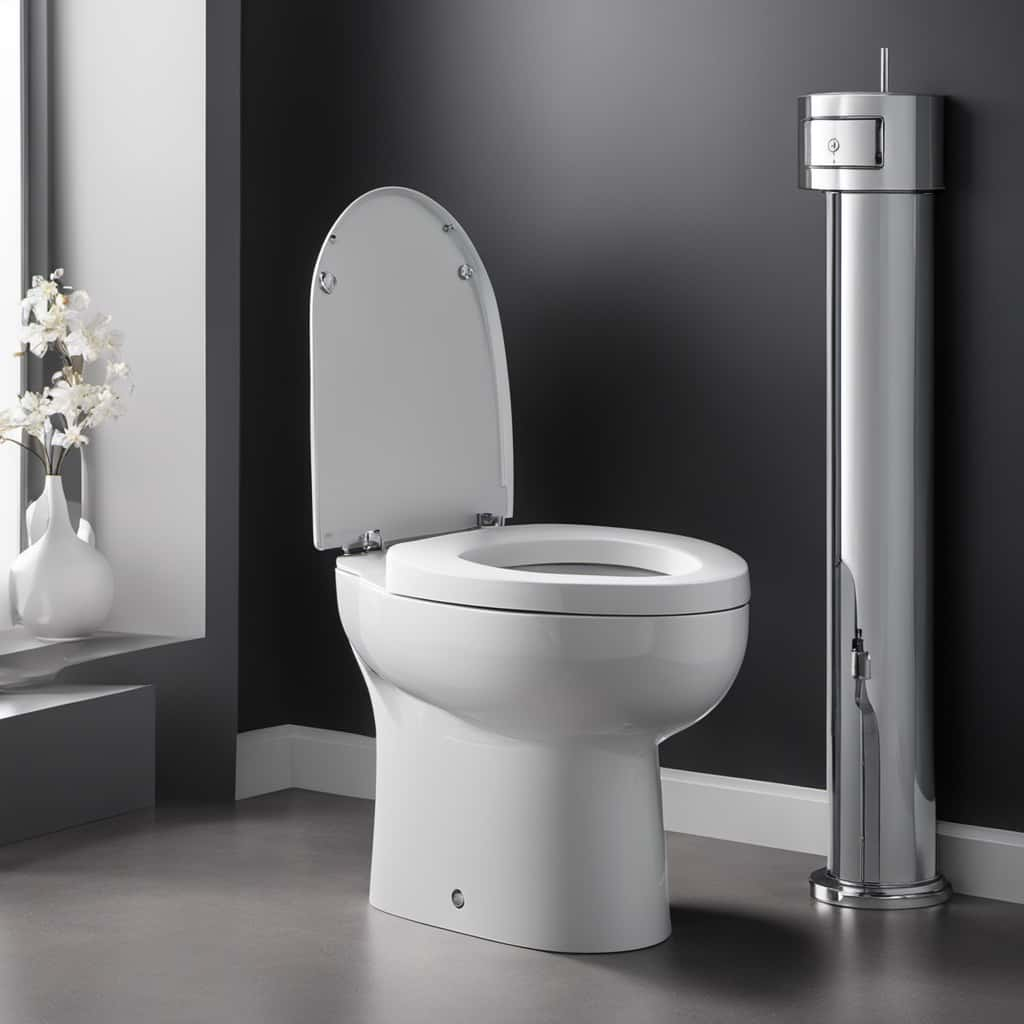
Every time we flush the toilet, we are contributing to water wastage and energy consumption. It’s a fact that each flush utilizes a substantial amount of water and consumes unseen energy.
Additionally, the process of treating wastewater can have negative environmental impacts. Excessive toilet paper usage further exacerbates the problem.
But fear not, there are sustainable alternatives to traditional flushing methods. In this article, we will explore the environmental consequences of flushing and discover ways to minimize our impact.
Key Takeaways
- Flushing the toilet wastes a significant amount of water, with standard toilets using about 1.6 gallons (6 liters) per flush and older models using up to 3.5 gallons (13 liters) per flush.
- On average, a person can waste approximately 3,650 gallons (13,800 liters) of water in a year just from flushing the toilet, highlighting the need for water conservation.
- Flushing the toilet also requires energy, with electric pumps in some toilets consuming energy and wastewater treatment plants requiring significant energy for treatment.
- Excessive toilet paper usage can lead to deforestation, as toilet paper production contributes to large-scale logging operations. Exploring alternatives like bidets or recycled toilet paper can help mitigate ecological consequences and reduce reliance on natural resources.
Water Usage: How Much Water Is Wasted With Each Flush
We waste a significant amount of water with each flush of the toilet.

Water conservation is crucial in addressing the global issue of water scarcity.
To understand the extent of water wastage, we need to examine how much water is actually used during a flush.
On average, a standard toilet uses about 1.6 gallons (6 liters) per flush, while older models can use up to 3.5 gallons (13 liters) per flush.
This may not seem like much, but considering that an average person flushes the toilet around five times a day, the water usage quickly adds up.
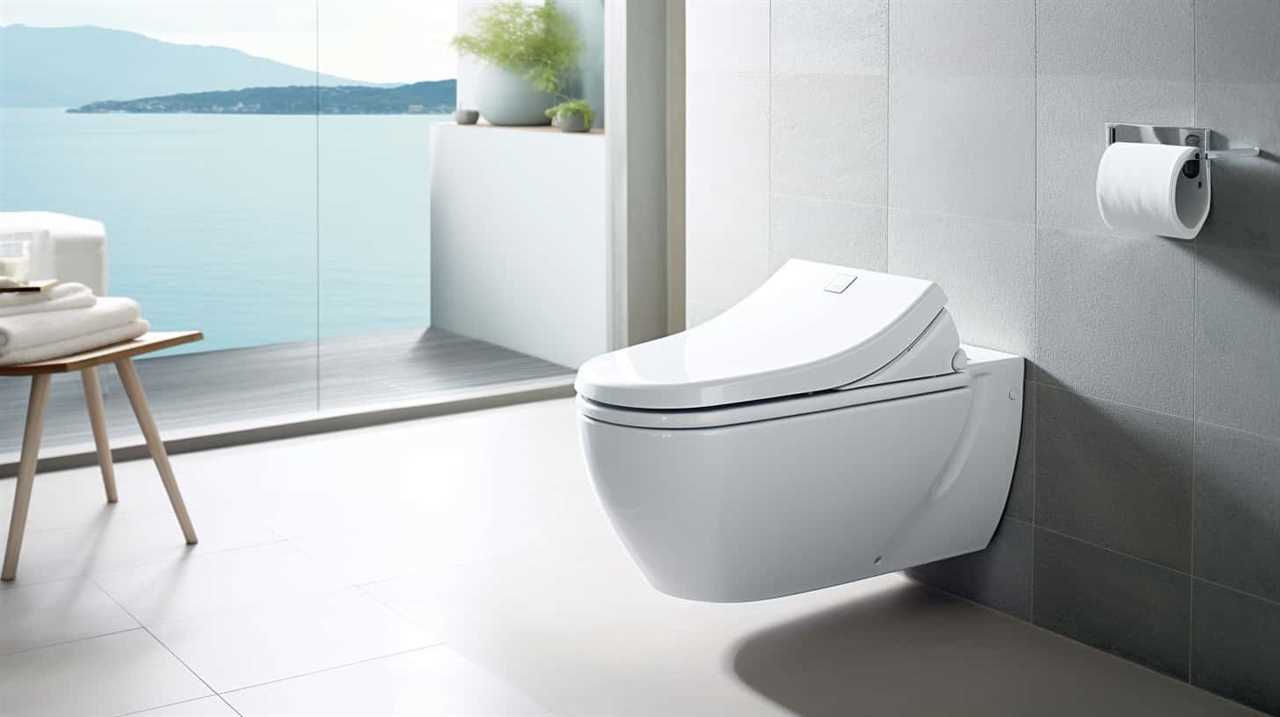
In a year, a single person can waste approximately 3,650 gallons (13,800 liters) of water just from flushing the toilet.
This highlights the importance of implementing water-saving measures and using more efficient toilet models to conserve water and combat water scarcity.
Energy Consumption: the Hidden Energy Costs of Flushing
To continue our examination of the environmental impact of flushing the toilet, let’s now delve into the hidden energy costs associated with this everyday act.
While the primary focus is often on water usage, it’s important to recognize that flushing also requires energy. Most toilets rely on gravity to flush, but some use electric pumps to assist with the process. These pumps consume energy, contributing to hidden costs.

Additionally, wastewater treatment plants require significant amounts of energy to treat and process the flushed water.
To mitigate these hidden costs, conservation measures can be implemented. Installing low-flow toilets, using dual-flush mechanisms, or opting for composting toilets can reduce both water and energy consumption.
Pollution: the Environmental Impact of Wastewater Treatment
While flushing the toilet may seem like a simple act, it’s important to recognize the environmental impact of wastewater treatment. Waste management plays a crucial role in reducing pollution and ensuring the safety of our water resources.
Wastewater treatment plants are responsible for removing harmful substances and contaminants from the water before it’s released back into the environment. However, the process of treating wastewater can also have unintended consequences. One of the major concerns is water contamination. Inadequate treatment processes or malfunctioning equipment can lead to the release of pollutants, such as chemicals and pathogens, into rivers, lakes, and oceans. This can have detrimental effects on aquatic ecosystems and pose a risk to human health.

Therefore, proper waste management practices and continuous monitoring are essential to minimize the environmental impact of wastewater treatment.
Toilet Paper: the Ecological Consequences of Excessive Toilet Paper Usage
The excessive usage of toilet paper can have ecological consequences, impacting both the environment and our water resources.
One of the main concerns associated with excessive toilet paper usage is the potential for deforestation. Toilet paper is made from trees, and the demand for toilet paper has led to large-scale logging operations in some areas. This deforestation not only destroys valuable ecosystems but also contributes to climate change by reducing the amount of carbon dioxide that can be absorbed by trees.
Furthermore, the recent toilet paper shortage has highlighted the need for more sustainable alternatives. By reducing our reliance on toilet paper and exploring environmentally-friendly options such as bidets or recycled toilet paper, we can help mitigate the ecological consequences of excessive toilet paper usage and preserve our natural resources for future generations.

Sustainable Solutions: Alternatives to Traditional Flushing Methods
One possible solution to mitigate the environmental impact of flushing toilets is by exploring alternative, more sustainable flushing methods. These innovative technologies can help us save water and reduce our ecological footprint.
Here are three options to consider:
- Dual-flush toilets: These toilets have two buttons or handles, allowing users to choose a low-volume flush for liquid waste and a higher-volume flush for solid waste. This simple design change can significantly reduce water usage.
- Composting toilets: These toilets use little to no water and instead break down human waste into compost. They’re a great option for areas with limited water resources and can contribute to sustainable agriculture practices.
- Greywater systems: These systems collect and treat water from sinks, showers, and washing machines, making it suitable for flushing toilets. By reusing water that would otherwise go to waste, greywater systems promote water conservation.
Frequently Asked Questions
Can Flushing the Toilet Too Often Lead to Water Shortages in Certain Areas?
Flushing the toilet too often can contribute to water shortages in certain areas. Water conservation is crucial, and reducing toilet usage is one way to conserve water and mitigate the impact on the environment.
Is It True That Flushing the Toilet With the Lid Open Can Release Harmful Bacteria Into the Air?
When flushing the toilet with the lid open, harmful bacteria can be released into the air. This can pose health risks as these bacteria can be inhaled or land on surfaces, potentially causing infections or illnesses.

Are There Any Health Risks Associated With Using Excessive Toilet Paper?
Using excessive toilet paper can pose health risks, such as clogged pipes and plumbing issues. Additionally, it can have a negative impact on wastewater treatment systems. Exploring toilet paper alternatives may help mitigate these concerns.
How Does the Use of Chemical Cleaning Agents in Toilets Affect the Environment?
Using chemical cleaning agents in toilets can have a negative environmental impact. These agents often contain harmful ingredients that can contaminate water sources and harm aquatic life. It is important to consider eco-friendly alternatives.
What Are Some Eco-Friendly Options for Replacing Traditional Flushing Toilets?
Eco-friendly toilet alternatives and water-saving toilet options are important considerations for reducing our environmental impact. By exploring innovative solutions, we can find ways to minimize water usage and promote sustainability in our daily lives.
Conclusion
In conclusion, it’s evident that flushing the toilet has significant negative impacts on the environment. The amount of water wasted, the hidden energy costs, the pollution from wastewater treatment, and the ecological consequences of excessive toilet paper usage all contribute to the overall harm caused.

It’s crucial for us to explore sustainable alternatives to traditional flushing methods in order to minimize our ecological footprint and protect our planet for future generations.
With an impeccable eye for detail and a passion for bathroom-related, Ava leads our editorial team gracefully and precisely.
Under her guidance, Best Modern Toilet has flourished as the go-to resource for modern bathroom enthusiasts. In her free time, you might find Ava exploring antique shops and looking for vintage bathroom fixtures to add to her collection.
Bathroom Enhancements
Is It Ok to Pour Buckets of Water Down the Toilet
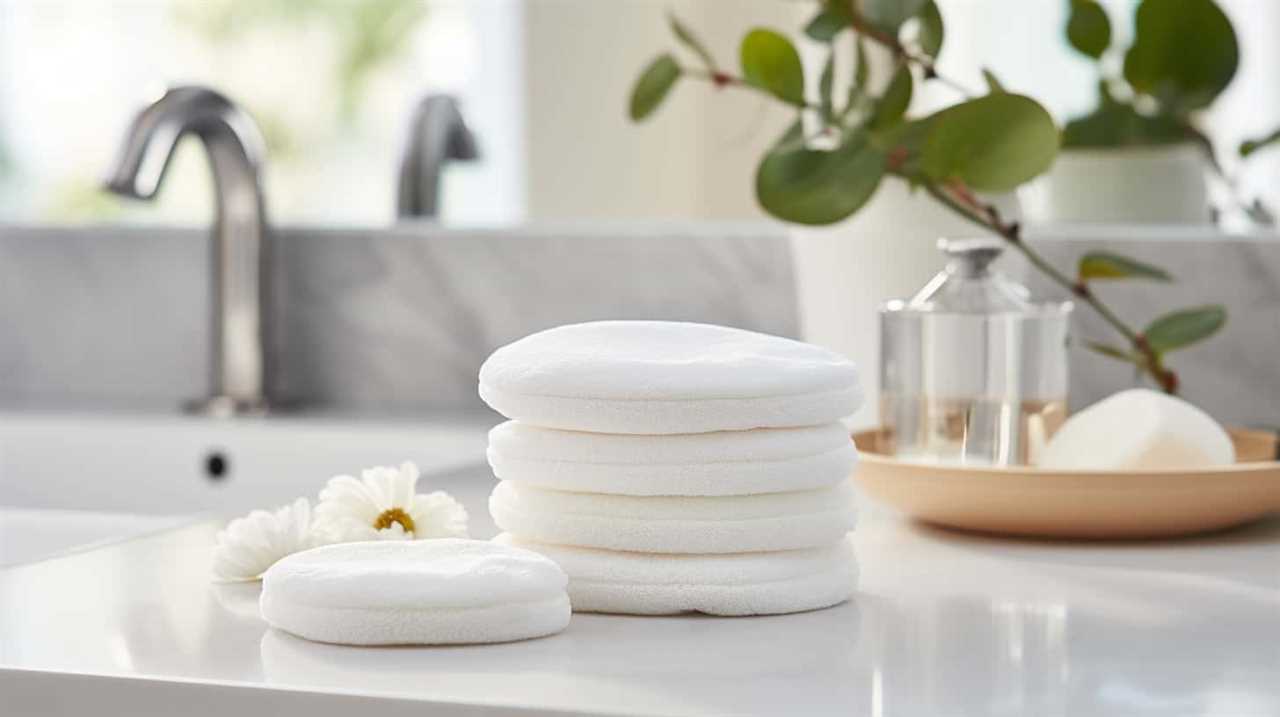
Are you fed up with handling a blocked toilet? We’ve all experienced it – the annoyance, the disruption.
But before you grab that bucket and start pouring water down the toilet, let’s take a closer look. In this article, we’ll explore the potential risks, benefits, and alternatives of this common solution.
We’ll also provide tips on how to safely pour water down the toilet and when it’s time to seek professional help.
Get ready to master the art of toilet troubleshooting!
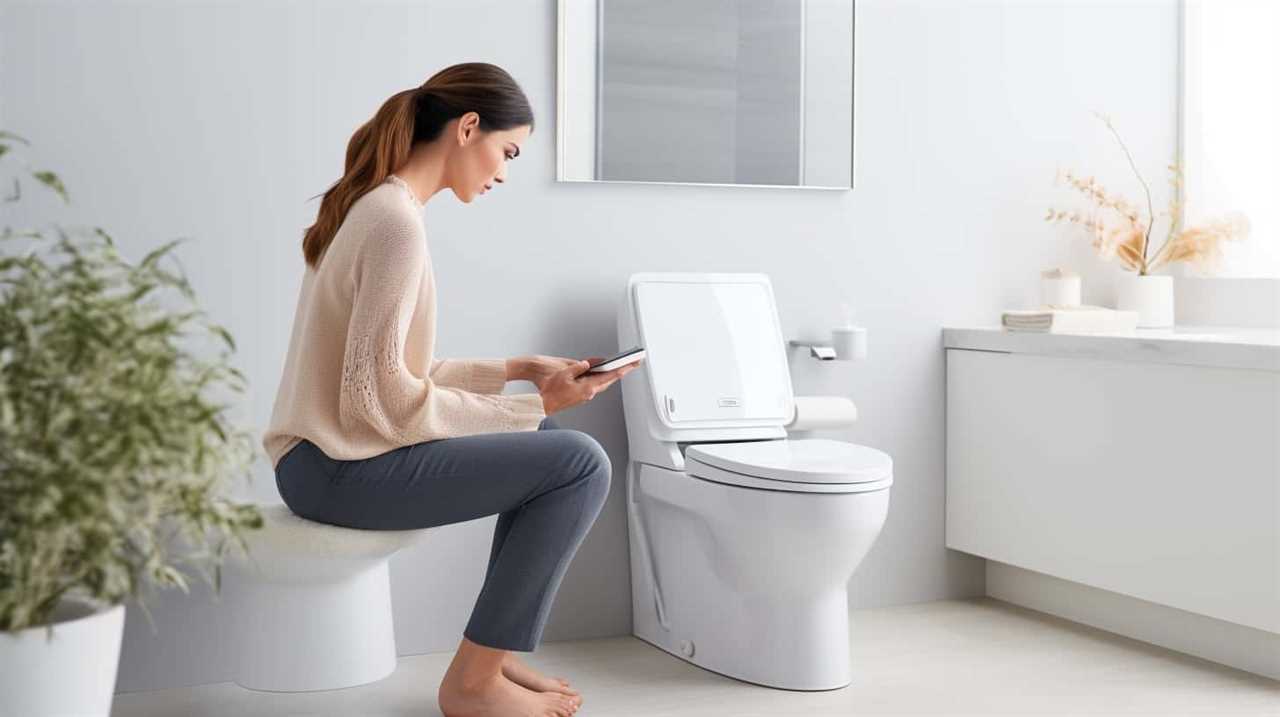
Key Takeaways
- Pouring water down the toilet can have potential risks such as overflowing, increased risk of clogging, strain on the plumbing system, and potential water damage.
- However, there are benefits to pouring water down the toilet, such as preventing odor and bacteria buildup, ensuring a clean toilet bowl, and contributing to water conservation efforts.
- There are alternative options to pouring water down the toilet, such as installing a low-flow toilet, using a dual-flush system, trying toilet tank displacement, and switching to natural cleaning products.
- It is important to consult a professional plumber to resolve plumbing issues, as they have expert knowledge and experience, can provide proper diagnosis and efficient solutions, and help prevent water damage and costly repairs in the future.
Potential Risks of Pouring Water Down the Toilet
There are several potential risks associated with pouring large quantities of water down the toilet. It’s important to be aware of these risks and take necessary precautions to avoid potential consequences.
One potential risk is the overflowing of the toilet bowl. Pouring excessive amounts of water can overwhelm the toilet’s drainage system, leading to an overflow and potential water damage.
Another risk is the potential for clogging the toilet. If the toilet is already prone to clogging, pouring large quantities of water can exacerbate the problem and result in a blockage.
Additionally, pouring excessive water down the toilet can put strain on the plumbing system, potentially causing leaks or even burst pipes.

To avoid these risks, it’s advisable to pour water slowly and in smaller quantities, allowing the toilet to flush properly without overwhelming the system. Regular maintenance of the toilet and plumbing system is also recommended to prevent any potential issues.
Benefits of Pouring Water Down the Toilet
One benefit of pouring water down the toilet is that it can help to prevent the buildup of odors and bacteria. When water is poured down the toilet, it helps to flush away any lingering waste and residue, ensuring that the toilet bowl remains clean and sanitary.
This can be particularly useful in households with multiple occupants or high traffic areas where the toilet is frequently used. Additionally, regularly pouring water down the toilet can contribute to water conservation efforts. Instead of using a large amount of water for a full flush, pouring a smaller amount of water can still achieve the desired cleanliness while minimizing water usage.
However, while pouring water down the toilet can provide these benefits, it’s important to consider alternatives that may be more efficient and environmentally friendly.

Alternatives to Pouring Water Down the Toilet
To explore more environmentally friendly options, we can consider using alternative methods to conserve water instead of pouring buckets of water down the toilet. Here are some alternatives for toilet water conservation and eco-friendly toilet cleaning:
- Install a low-flow toilet: These toilets use less water per flush, helping to conserve water without sacrificing performance.
- Use a dual-flush system: Dual-flush toilets have two buttons or handles, allowing you to select a lower or higher water volume depending on the waste being flushed.
- Try toilet tank displacement: Place a plastic bottle or bag filled with water in the toilet tank to displace water and reduce the amount used per flush.
- Switch to natural cleaning products: Choose eco-friendly toilet cleaners that are biodegradable and free from harsh chemicals, reducing harm to the environment.
By implementing these alternatives, we can contribute to water conservation efforts and promote a more sustainable approach to toilet usage.
Transitioning into the next section, let’s also explore some tips for safely pouring water down the toilet.
Tips for Safely Pouring Water Down the Toilet
Sometimes, we need to safely pour water down the toilet to address certain issues or perform maintenance tasks. When it comes to toilet maintenance, it’s crucial to be mindful of water conservation.

Here are some tips to ensure the safe pouring of water down the toilet while minimizing water waste.
Firstly, use a bucket with a controlled pour spout to avoid spillage and unnecessary water usage.
Secondly, pour the water slowly and steadily to prevent any overflow or splashing. It’s important to maintain a steady flow of water to avoid any potential damage to the toilet or the surrounding area.
Additionally, be cautious not to pour excessive amounts of water that could strain the plumbing system or cause clogs.
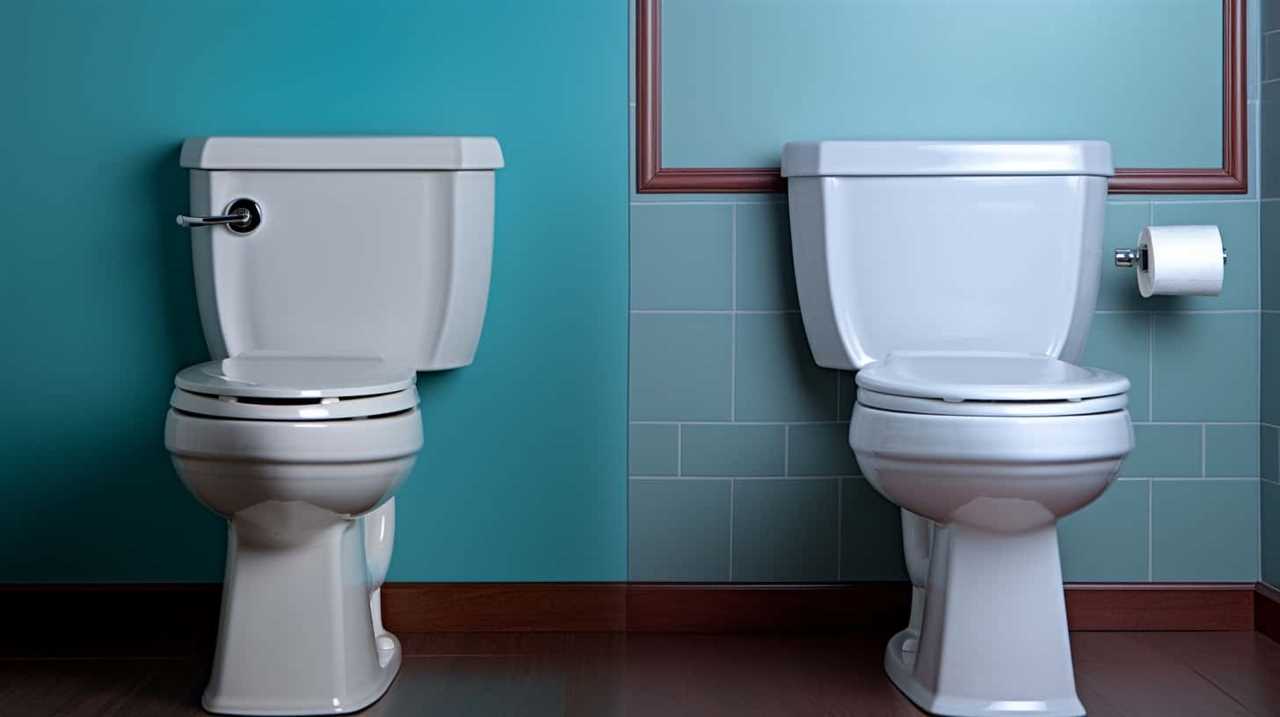
When to Seek Professional Help for a Clogged Toilet
If experiencing a clogged toilet, it’s important to consider seeking professional help. While some minor clogs can be resolved with DIY methods, there are situations where the risks outweigh the benefits. Here are some signs that indicate a serious toilet clog:
- Persistent clogs: If your toilet keeps getting clogged despite your attempts to unclog it, it may be a sign of a more significant issue.
- Multiple fixtures affected: When other fixtures in your bathroom, such as sinks or showers, also start experiencing drainage problems, it suggests a blockage in the main sewer line.
- Foul odors: Unpleasant smells coming from your toilet, especially accompanied by slow drainage, could indicate a blockage that requires professional attention.
- Sewage backup: If sewage starts backing up into your toilet or other drains, it’s a clear indication of a severe clog that needs immediate professional intervention.
When faced with these signs, it’s best to consult a professional plumber to diagnose and resolve the issue, ensuring a thorough and long-lasting solution.
Frequently Asked Questions
How Much Water Should I Pour Down the Toilet to Unclog It?
To unclog the toilet, we recommend using eco-friendly solutions like pouring a moderate amount of water down the bowl. Alternatively, you can use a plunger to create pressure and dislodge the blockage.
Can Pouring Water Down the Toilet Cause Any Damage to the Pipes or Plumbing System?
Pouring water down the toilet is a safe and effective method for unclogging it. It is less damaging to pipes than chemical drain cleaners and offers a viable alternative to using plungers.
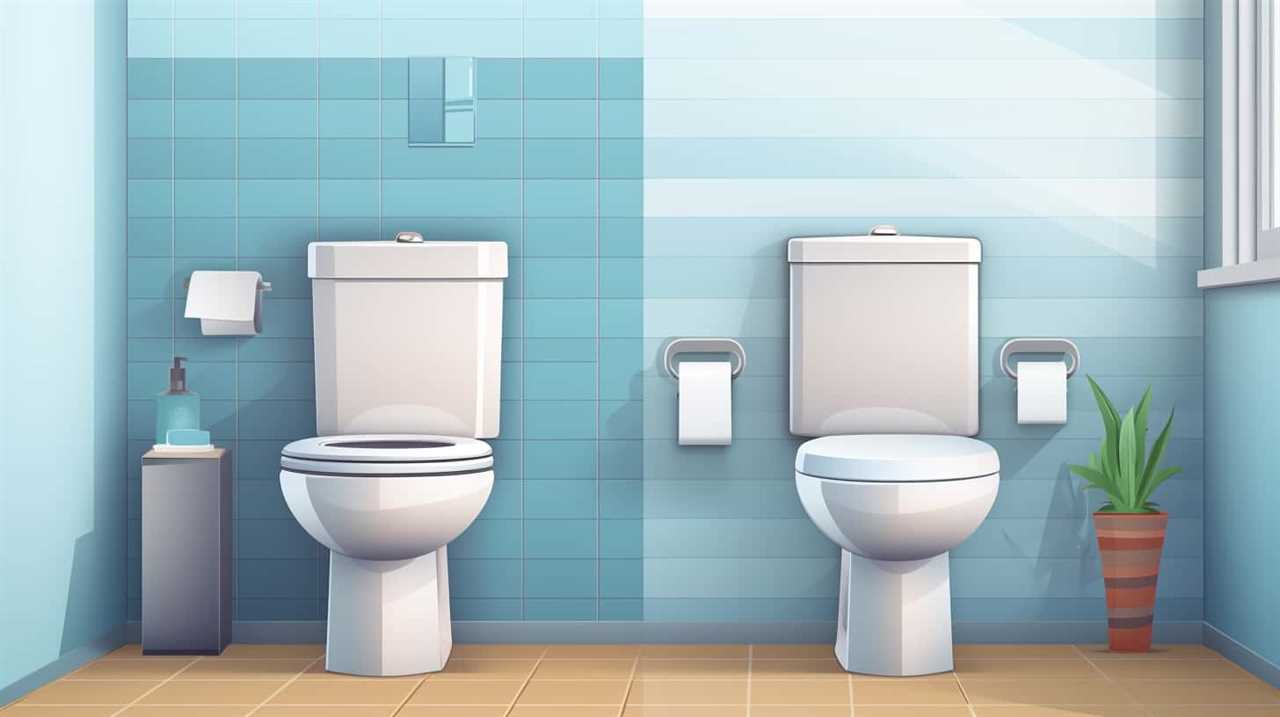
Is It Safe to Pour Hot Water Down the Toilet?
Pouring hot water down the toilet is generally safe, but caution must be exercised. The high temperature can cause damage to the toilet bowl, wax ring, or even the pipes, leading to leaks or cracks.
Can Pouring Water Down the Toilet Potentially Worsen a Clog?
Pouring water down the toilet may potentially worsen a clog. It is important to consider the pros and cons of using a plunger or a drain snake instead. Each method has its own advantages and disadvantages.
Are There Any Eco-Friendly Alternatives to Pouring Water Down the Toilet to Unclog It?
There are eco-friendly solutions and natural toilet unclogging methods available. These alternatives can be effective in unclogging toilets without the need for pouring buckets of water down the toilet.
Conclusion
In conclusion, pouring buckets of water down the toilet can be a risky endeavor with potential drawbacks. While it may provide temporary relief for a clog, there are alternative methods that are safer and more effective.

It’s essential to exercise caution and follow proper techniques to avoid further damage. Remember, seeking professional help is always a wise choice if the problem persists.
As the saying goes, ‘Better safe than sorry.’
With an impeccable eye for detail and a passion for bathroom-related, Ava leads our editorial team gracefully and precisely.
Under her guidance, Best Modern Toilet has flourished as the go-to resource for modern bathroom enthusiasts. In her free time, you might find Ava exploring antique shops and looking for vintage bathroom fixtures to add to her collection.
-

 Bathtub2 months ago
Bathtub2 months agoAre Clorox Toilet Wand Refills Septic Safe
-

 Reviews2 months ago
Reviews2 months agoLoupusuo Luxury Smart Toilet Review [2024]
-

 Reviews2 months ago
Reviews2 months agoSimple Project Modern Smart Toilet Review [2024]
-

 FAQ - Advanced Bathroom Queries2 months ago
FAQ - Advanced Bathroom Queries2 months agoWhat to Do if You Accidentally Flush a Paper Towel
-

 Reviews2 months ago
Reviews2 months agoLDian Smart Toilet Review: Luxury and Hygiene Combined [2024]
-

 Toilet Brands2 months ago
Toilet Brands2 months agoCan You Put Toilet Paper Down the Toilet in Cyprus
-

 Reviews2 months ago
Reviews2 months agoWhich Is Better Flush Valve or Flush Tank
-

 FAQ - Advanced Bathroom Queries2 months ago
FAQ - Advanced Bathroom Queries2 months agoWhat to Do if a Toilet Paper Roll Gets Flushed Down the Toilet






















